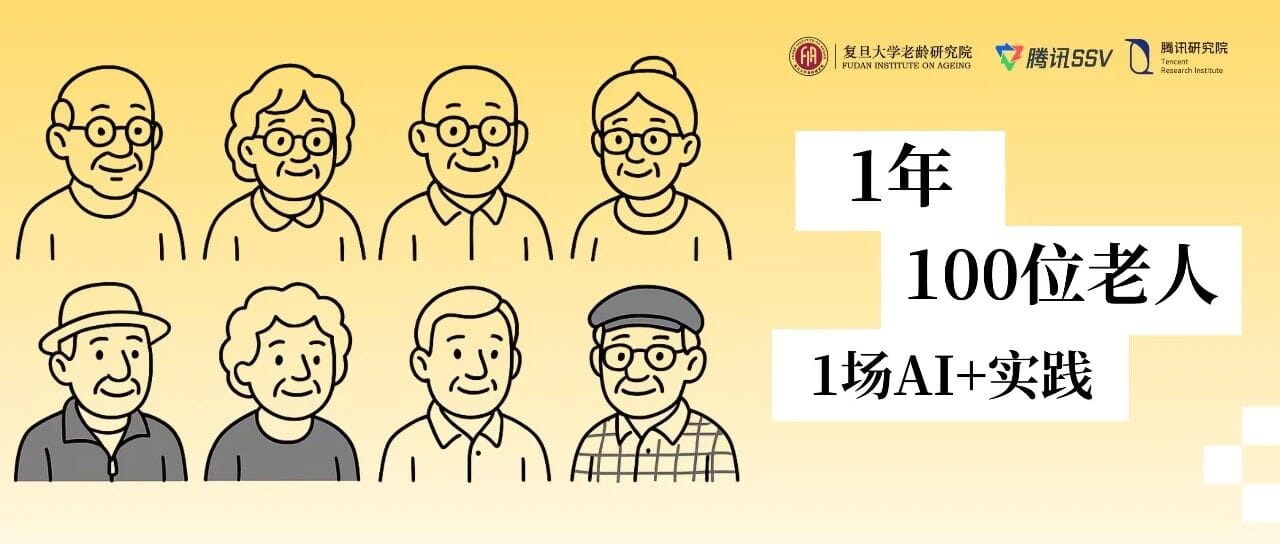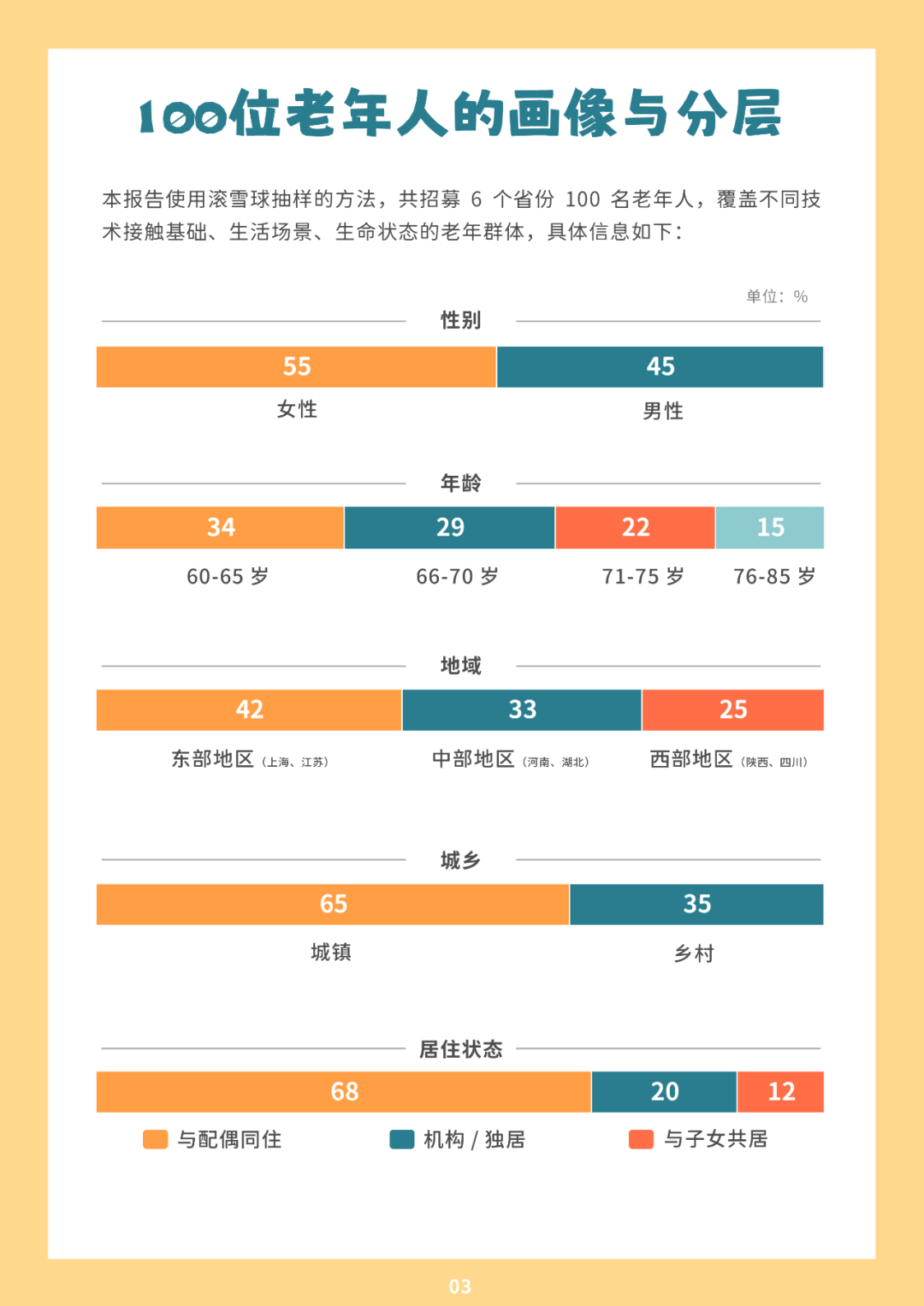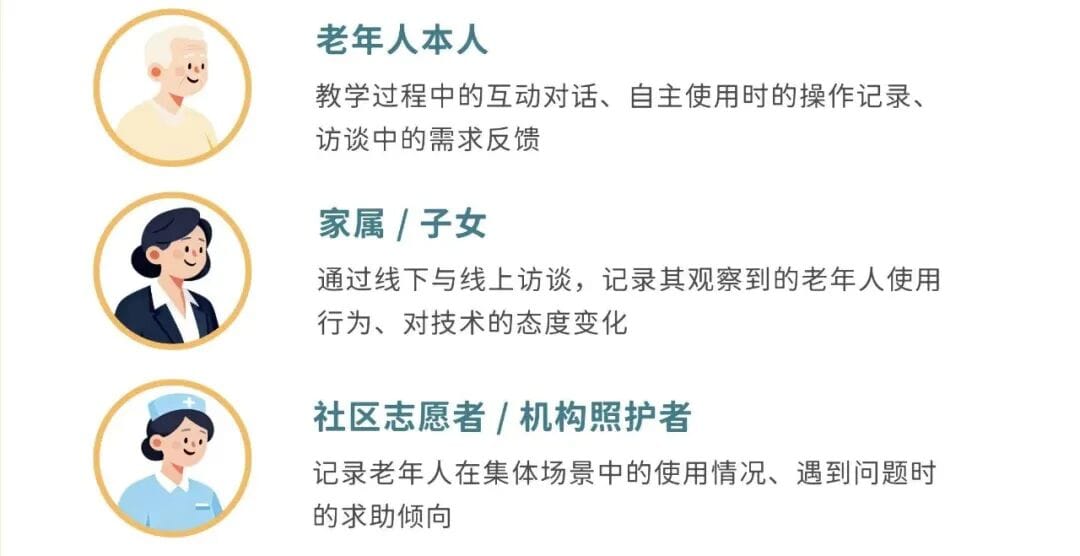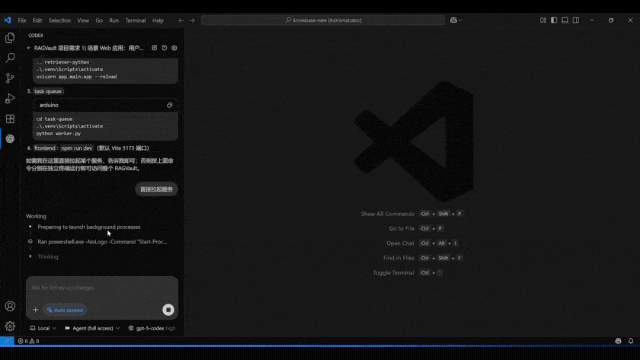How Seniors Redefine Algorithms in Practice: 100 People, 1 Year, 1 Experiment

Understanding How Seniors Use Large Language Models
A One-Year Study with 100 Elderly Participants

---
Introduction
Emerging technologies such as large language models (LLMs) are reshaping communication, education, and information access at astonishing speed. While younger demographics often adopt these tools quickly, seniors encounter them in unique ways — shaped by life rhythms, emotional priorities, and trust patterns.
This study, led by Fudan University Institute on Aging, Fudan University AI for Good & Smart Aging Research Center, Tencent SSV Time Lab, and Tencent Research Institute, set out to explore:
- How seniors learn and use LLMs
- What changes when AI becomes part of their daily life
- How emotional, functional, and support needs vary across regions
Our year-long project — Teaching 100 elderly people to use large language models — delivered not only skill training but deep insight into the human–AI relationship.
---
Study Design: Teach – Use – Track – Interview
We invited 100 seniors to try six leading Chinese LLM applications (e.g., Tencent Yuanbao, Tongyi Qianwen) chosen for distinct interface styles and broad adoption.
Phases:
- Baseline Survey (Jun–Aug)
- Recruitment, in-person interviews on device use, daily needs, and concerns
- Customized teaching plans per participant
- Focused Teaching (Sep–Mar)
- Three offline 1-on-1 sessions (40–60 mins each) per participant
- Topics progressed from basic app opening to customizing advanced queries
- Real-time documentation of difficulties and feedback
- Daily Tracking (Apr–Sep)
- Online check-ins every two weeks
- Logged practical use cases and problems encountered
- Summary & Review (Oct)
- Deep interviews with seniors + family/caregivers
- Mapped reasons for continued use or abandonment
---
Regional & Demographic Portrait

Method Adjustments by Region:
- East: Training emphasized advanced functional features
- Central: Balanced coverage for mixed familiarity levels
- West: Focus on building confidence and basic comfort
---
Comprehensive Data Collection

We built a corpus of 10,236 valid items covering voice and text records.
- Voice records: 8,860 entries (~620 hours) transcribed & emotion-tagged
- Text notes: 1,376 entries, incl. handwritten logs and family feedback
---
Key Themes & Findings
1. "Why Should I Use It?" – Pre-Use Confusion
Seniors often question necessity before adoption:
- Life is already rich — Technology seen as optional
- Prefer human connection — Avoid letting tech replace family bonds
- Too many apps already — LLM versatility initially feels directionless
---
2. Trust Calibration
Types observed:
- Limited Correction — Gradual testing and cautious trust building
- Collaborative Reciprocity — Flexible adjustment, active personalization
- Cognitive Solidification — Resistance due to risk perception or emotional defense
- Erroneous Calibration — Misjudgment loops from misleading cues or poor UI design
---
3. Barriers in Use
Question Gap
- Hesitation: Fear of “asking wrong” or breaking the machine
- Preference for voice queries, filled with polite openers (“May I ask…”), seen as self-protection strategy
Interface Design
- Warm, clear invitations encourage interaction
- Dense, abstract UIs trigger “interface anxiety,” especially in rural seniors
---
4. Gender Divide
Compression Effect: Housework limits women’s tech time
Occupation Effect: Men get priority for high-performance devices
Substitution Effect: Women more likely to defer to family help, limiting skill growth
---
5. Emotional Trajectory
Initial: Novelty → Gap-Filler
Early curiosity evolves into role-based companionship
Long-Term: Trying → Needing
Ritualized daily interactions provide stability and reduce loneliness
Deep Needs:
- Life-meaning reconstruction
- Autonomy and control
- Continued social presence
- Low-risk socializing
- Life narrative recording
---
6. Desired Future AI Roles
Fortune-Teller
For comfort, certainty, and hope
Trustworthy Doctor
Plain-language health guidance and access support
Friend to Chat With
Non-judgmental listening and recall of shared stories
Toy for Relaxation
Simple, joyful play to ease loneliness
---
Conclusion: Technology at a Human Pace

- Seniors redefine “smart” as slow, attentive, human-like
- They show that co-living with technology, not just “using” it, is the goal
- Equal understanding, not special care, is their primary expectation
- A gentler society mirrors how we design tech for those who move slower
Key Insight:
> The value of technology lies not in speed alone, but in its capacity to wait — integrating into daily life and rhythms.
---
Broader Implications
Platforms like AiToEarn官网 — an open-source AI content monetization ecosystem — exemplify inclusive approaches:
- Open-source tools (GitHub link) for AI creation, multi-platform publishing (Douyin, WeChat, YouTube, Instagram, etc.), analytics, and model ranking
- Potential to adapt similar tools for senior-friendly AI companions that merge functionality with empathy
---
References
- Shen Qi, Zou Xinyue, The Tango Between the Elderly and Large Language Models: Calibrating Initial Trust in Human-Machine Interaction
- Shen Qi, Cai Yaohui, Zou Xinyue, Hesitant Whispers: The "Questioning Gap" in the Elderly's Use of Large Models
- Shen Qi, Cai Yaohui, Zou Xinyue, Squeezing, Occupying, and Replacing: The Gendered Intelligence Gap in the Elderly's Long-Term Use of Large Models
---
Final Thought:
> In teaching seniors to use AI, we learned more about slowing down, listening, and making digital language warmer. Technology truly thrives when it understands — and waits.



